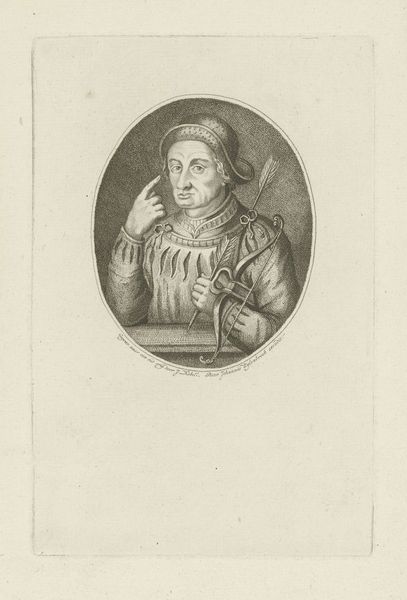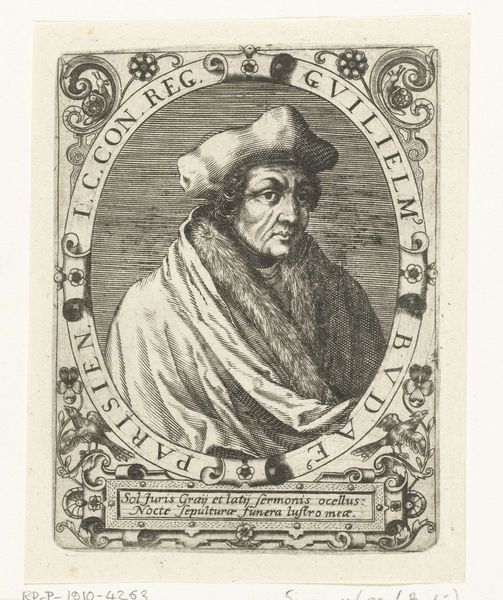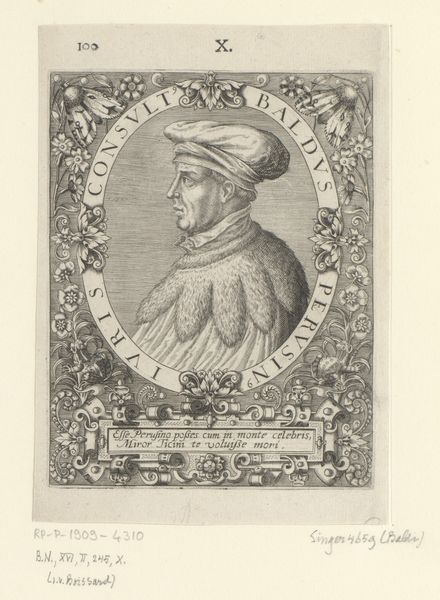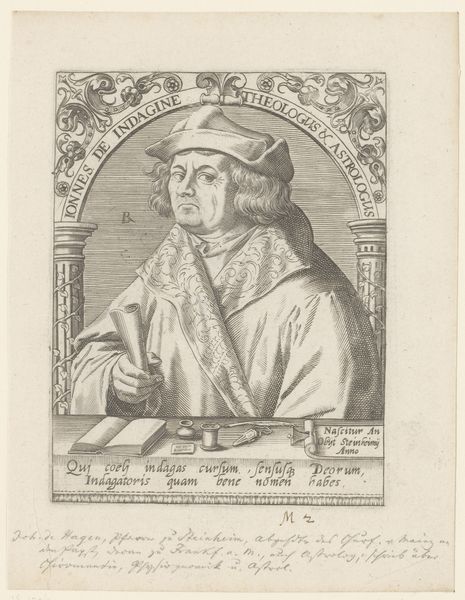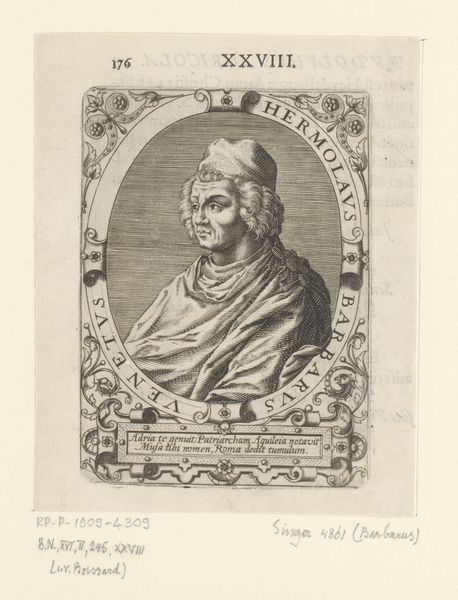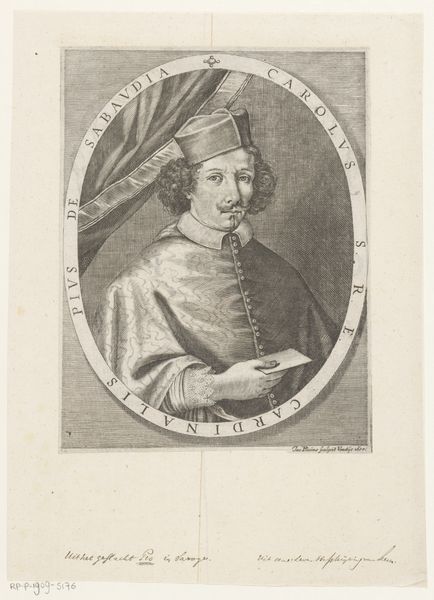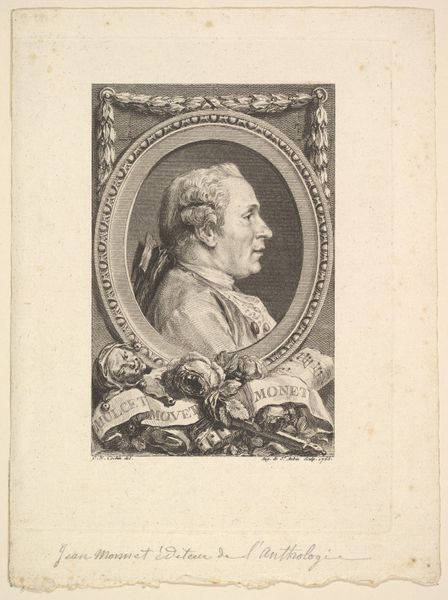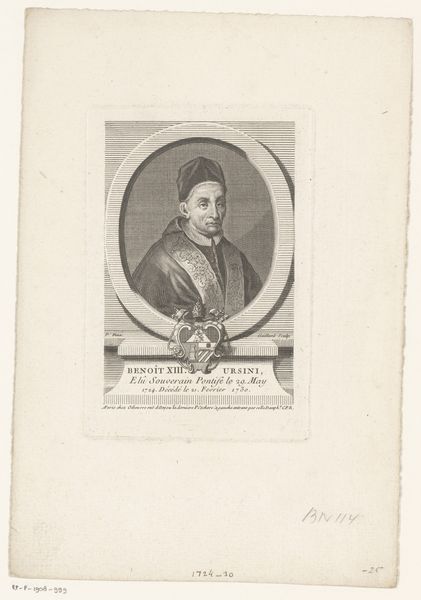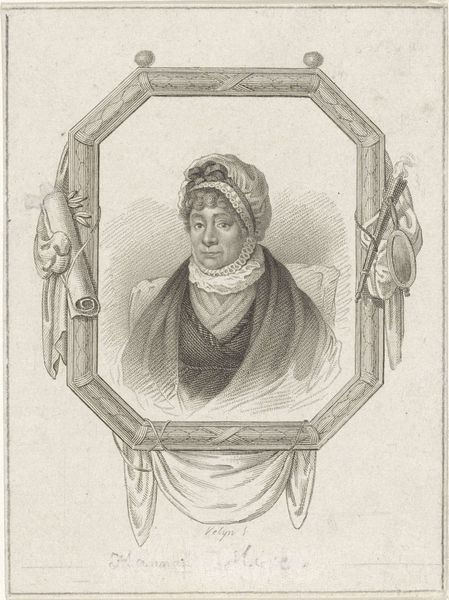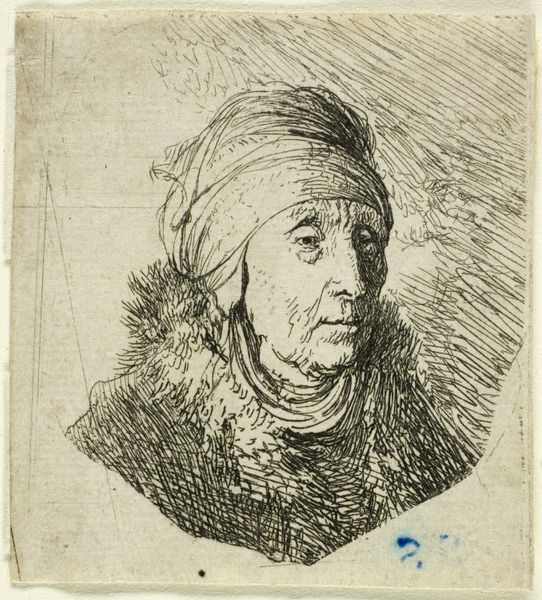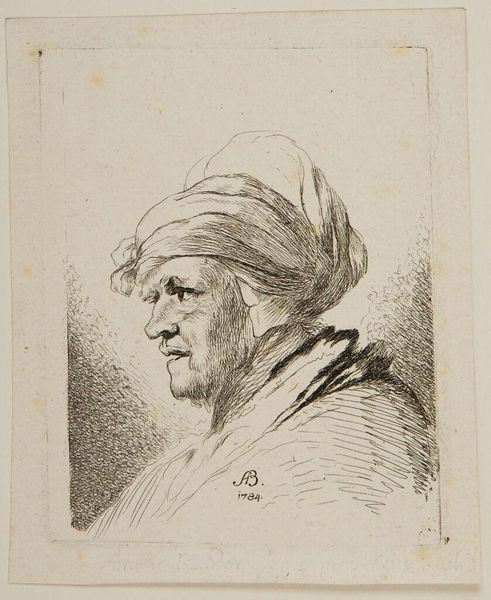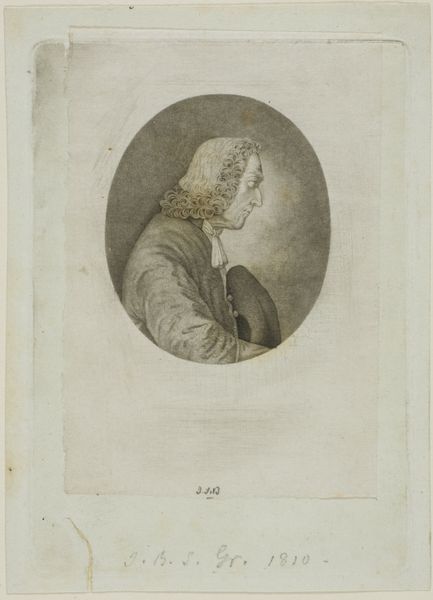
engraving
#
history-painting
#
academic-art
#
engraving
Dimensions: height 179 mm, width 100 mm
Copyright: Rijks Museum: Open Domain
Editor: We’re looking at "Portret van Albrecht von Haller" by Balthasar Anton Dunker, dating from 1777 to 1807. It’s an engraving. The sitter looks very important! What kind of impact did these types of portraits have? Curator: The image clearly speaks to the power of portraiture in solidifying one's legacy. In Dunker's time, portraits like this functioned less as simple representations and more as carefully constructed symbols of status, intellect, and societal contribution. Note how von Haller is framed by scholarly objects. Editor: Yes, there are books and writing implements there. So, this portrait isn't just about Albrecht von Haller as a person, but about his public persona, correct? Curator: Exactly! Dunker likely crafted this engraving for wider distribution, allowing von Haller's image and, therefore, his perceived importance to circulate within intellectual and possibly even political spheres. Editor: It seems so... calculated, then. Did the public view these portraits as accurate depictions, or were they in on the performative aspect? Curator: That’s a fantastic question! Audiences understood the conventions of portraiture and the elements were meant to convey virtue. So, while viewers might recognize a likeness, they also understood the image was idealized. Editor: So the performative aspect of it wasn't hidden at all. What are the implications for understanding imagery today? Curator: It prompts us to question whose stories are told, and how their images are curated for public consumption, revealing power dynamics that might otherwise be invisible. Editor: This has made me think about the creation of historical narratives. Thank you. Curator: The pleasure was mine. This piece provides ample opportunities to examine the relationship between art and cultural institutions.
Comments
No comments
Be the first to comment and join the conversation on the ultimate creative platform.
